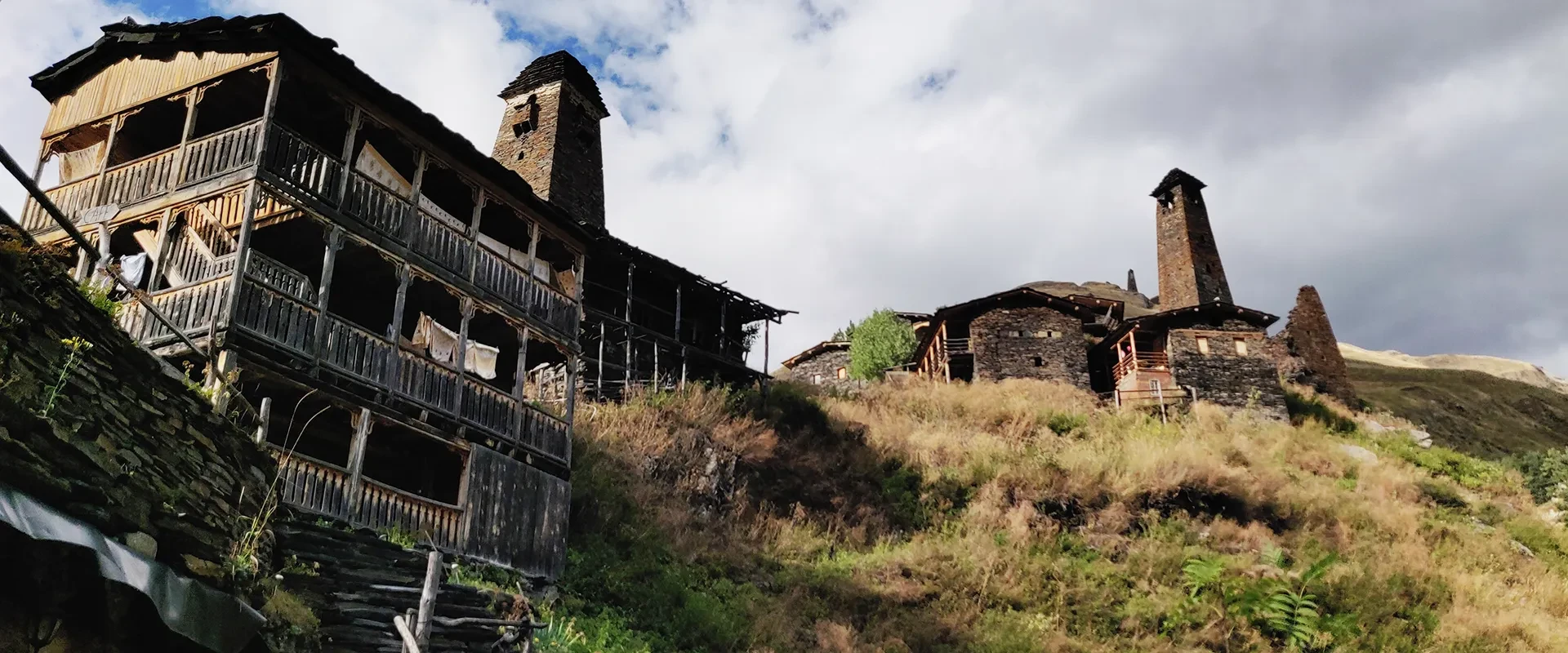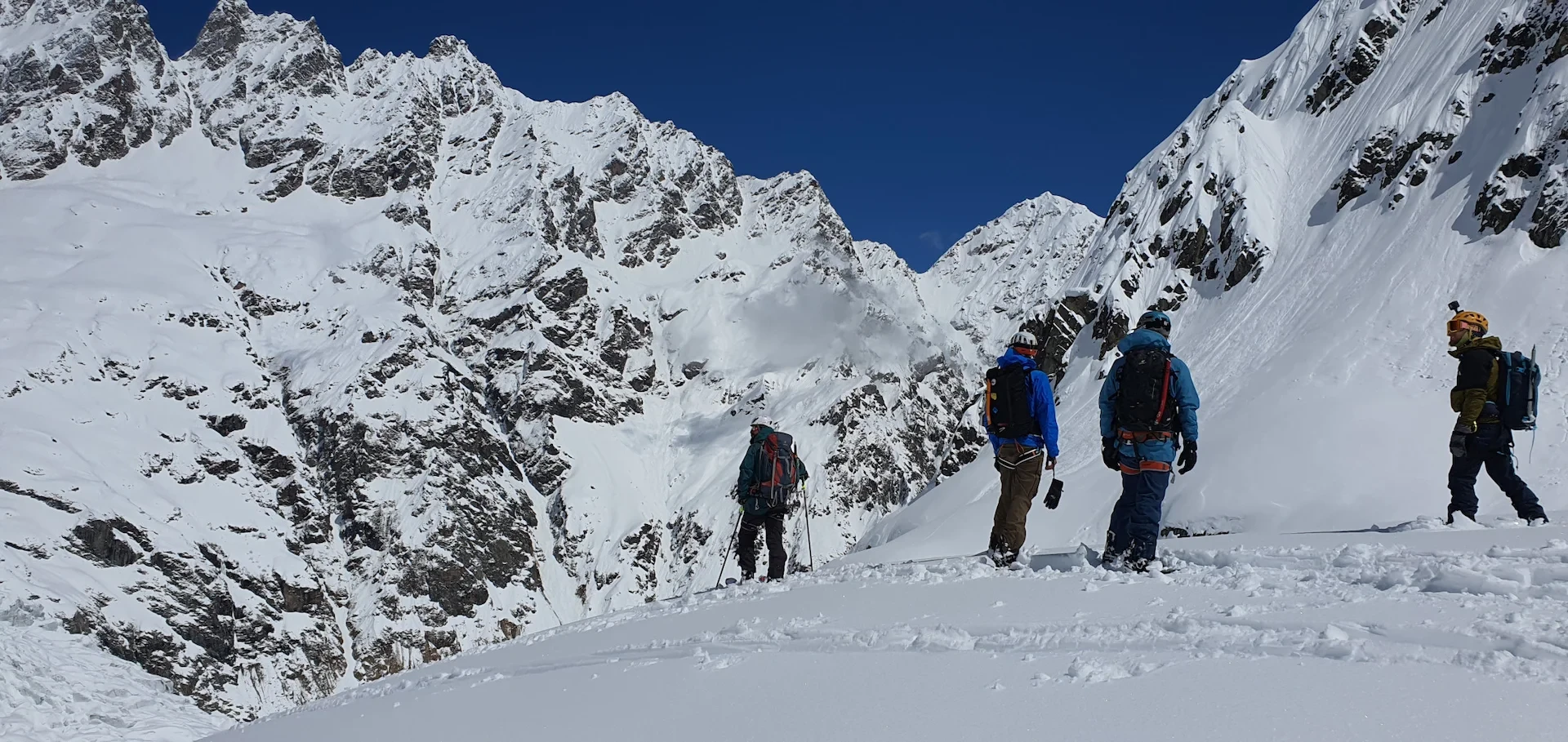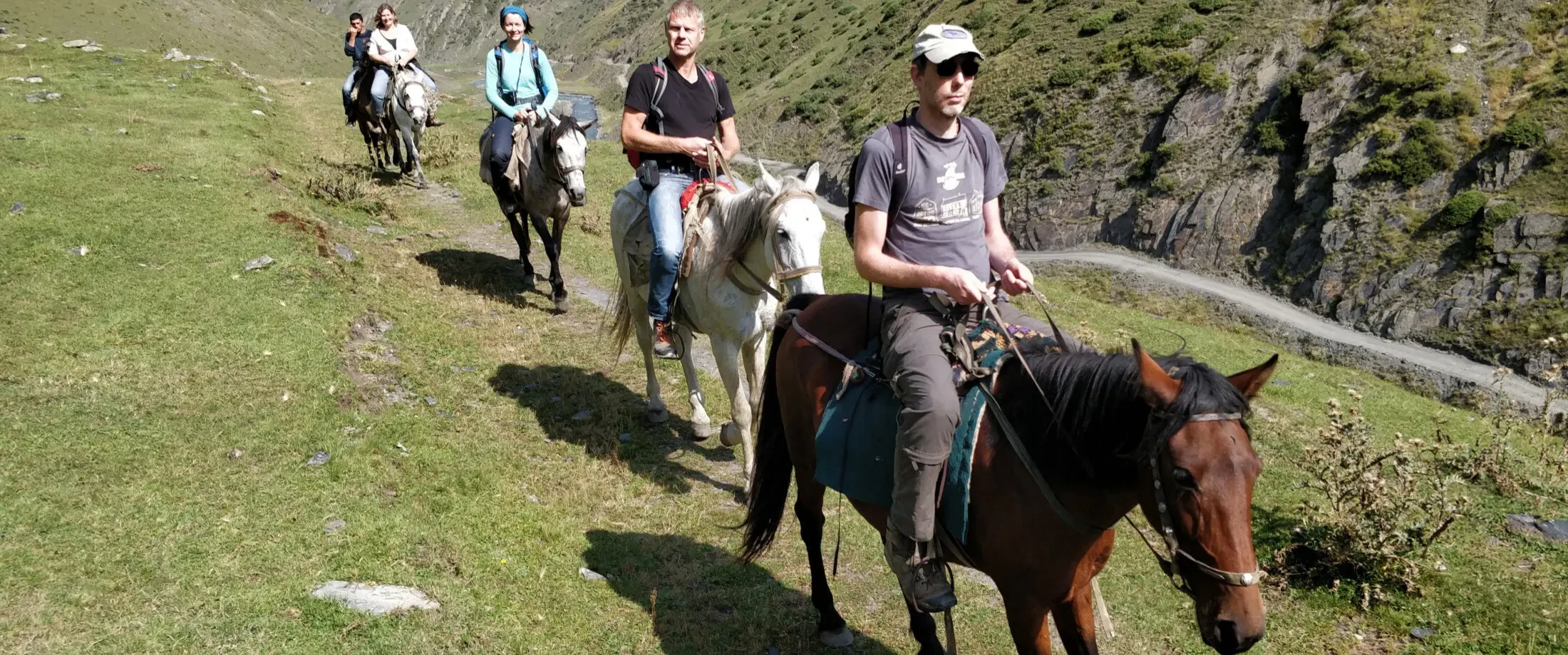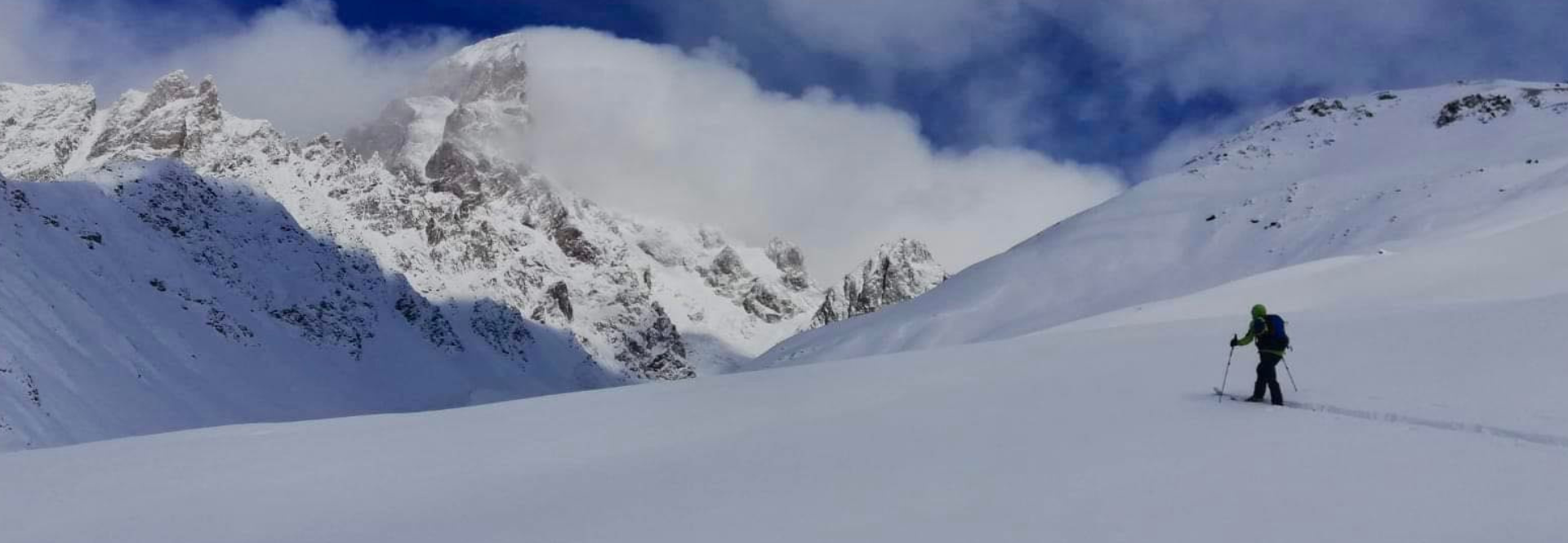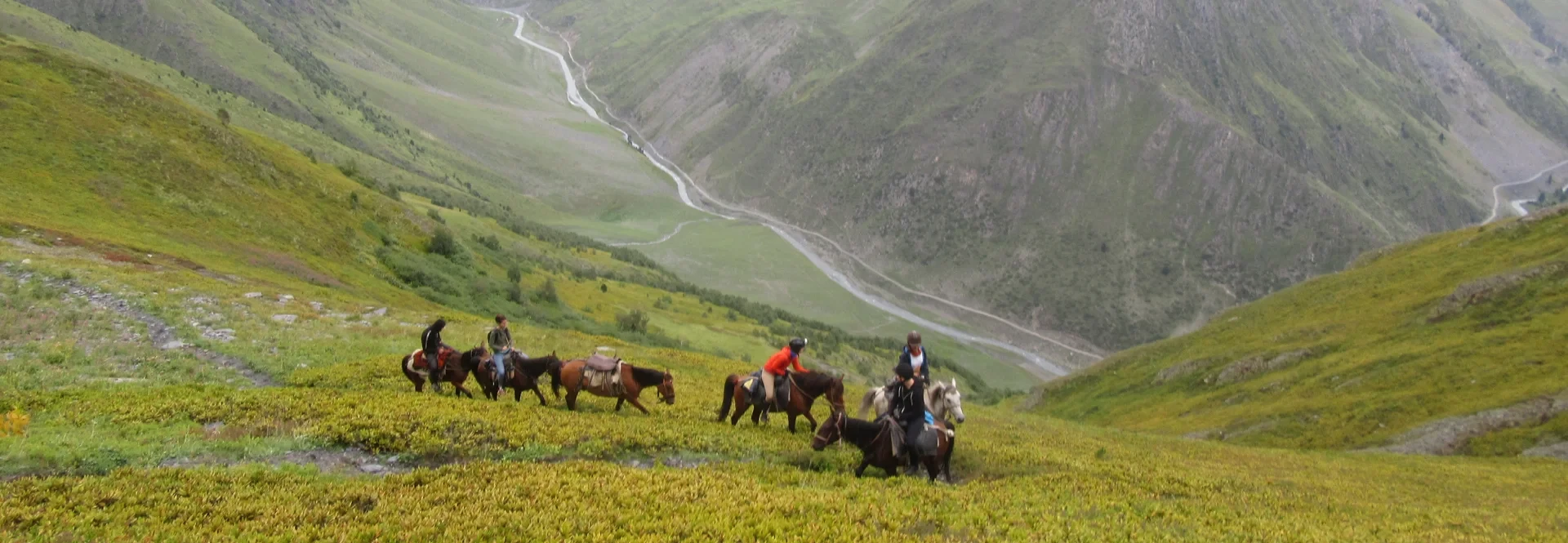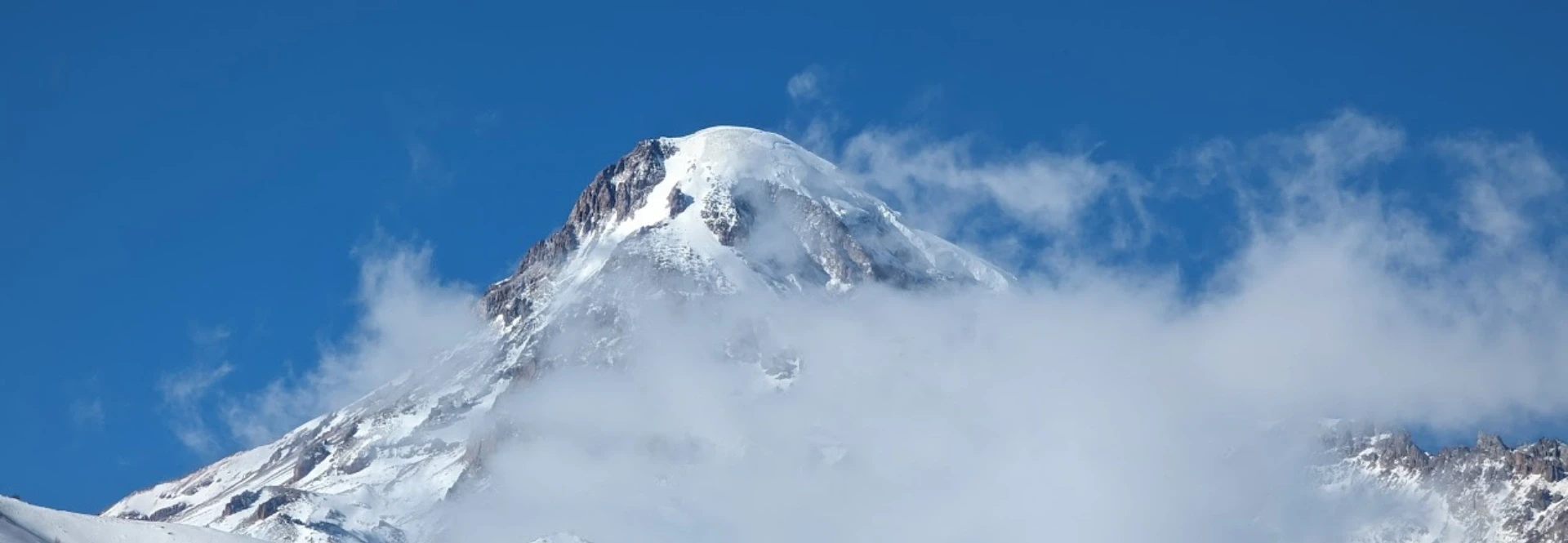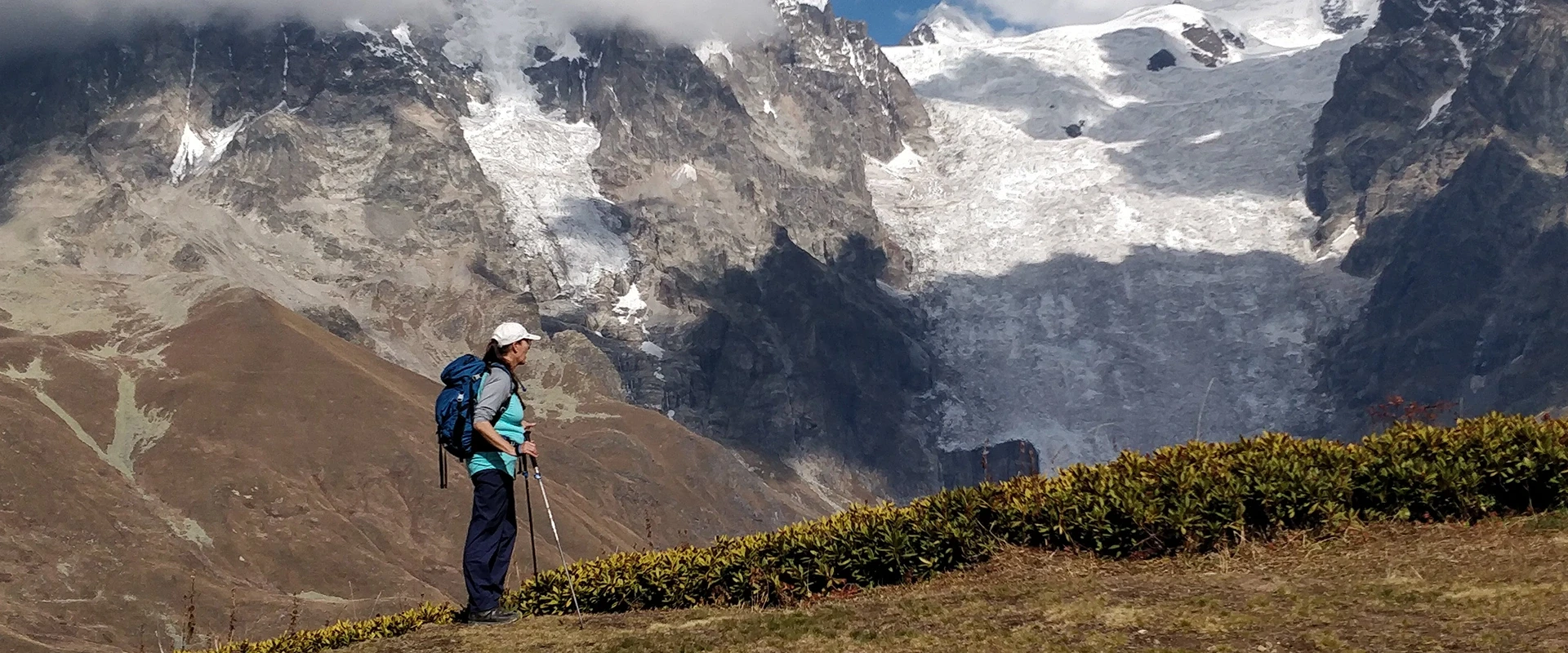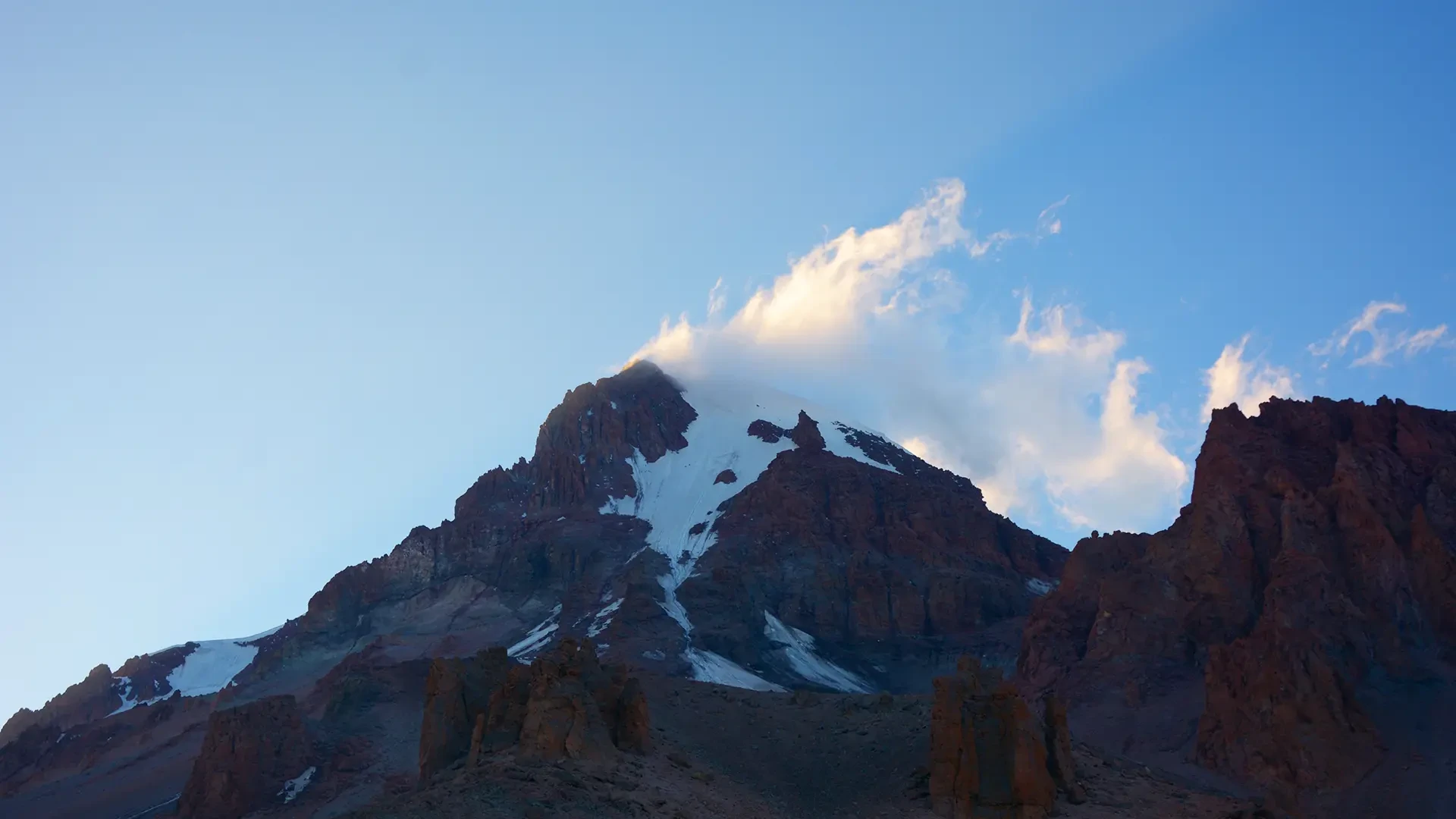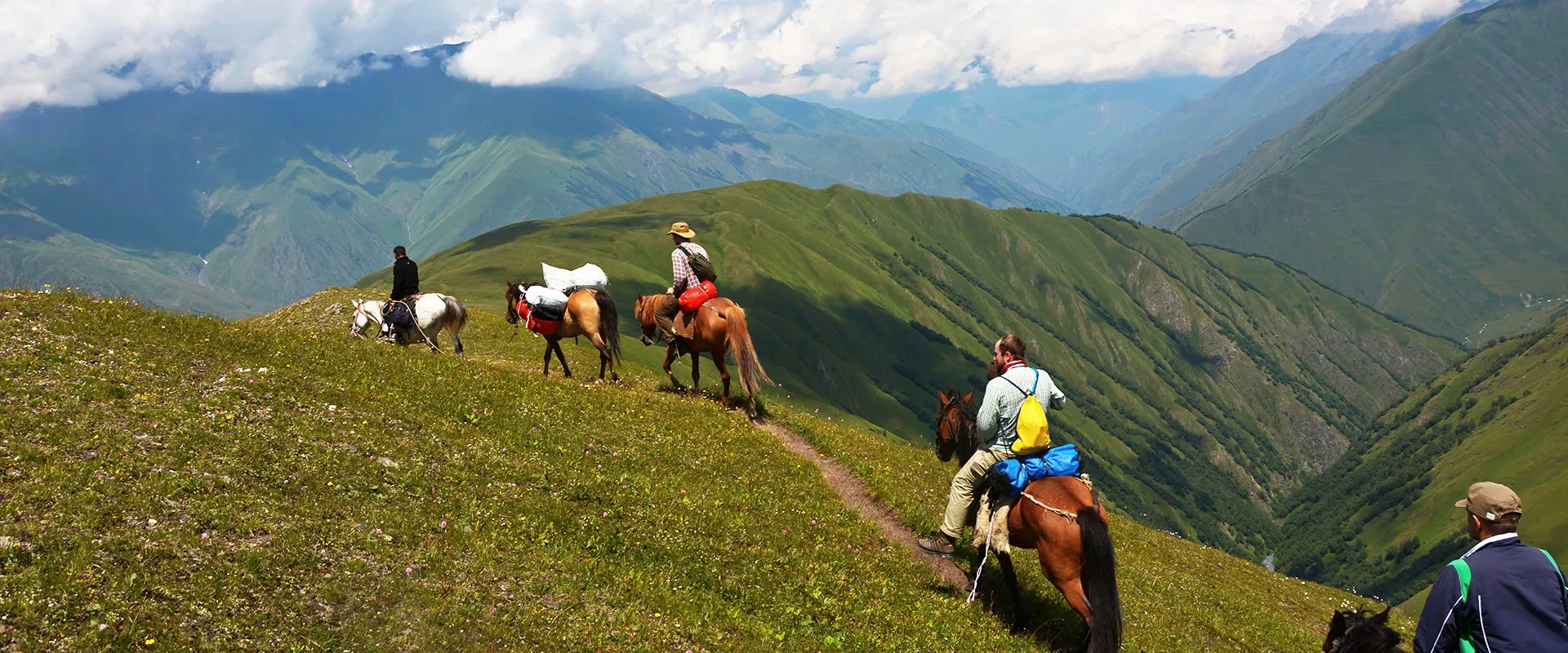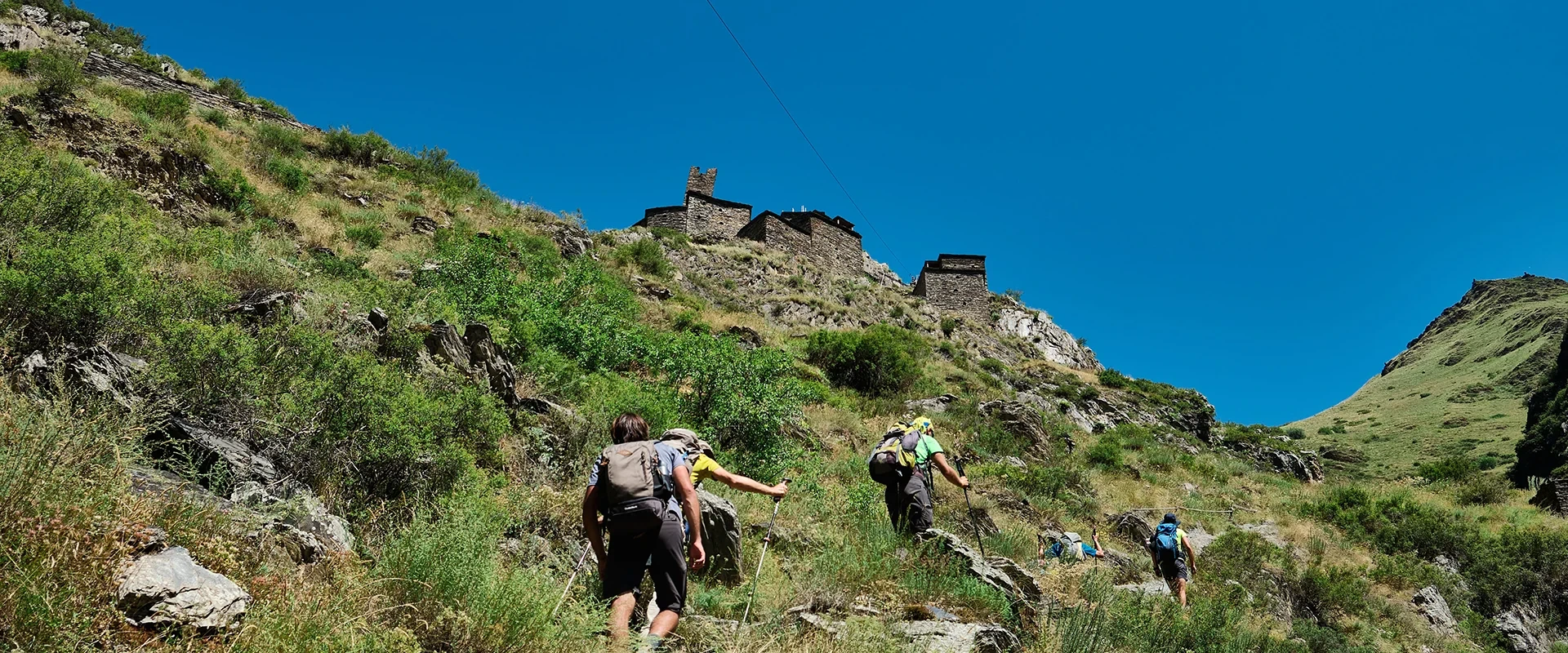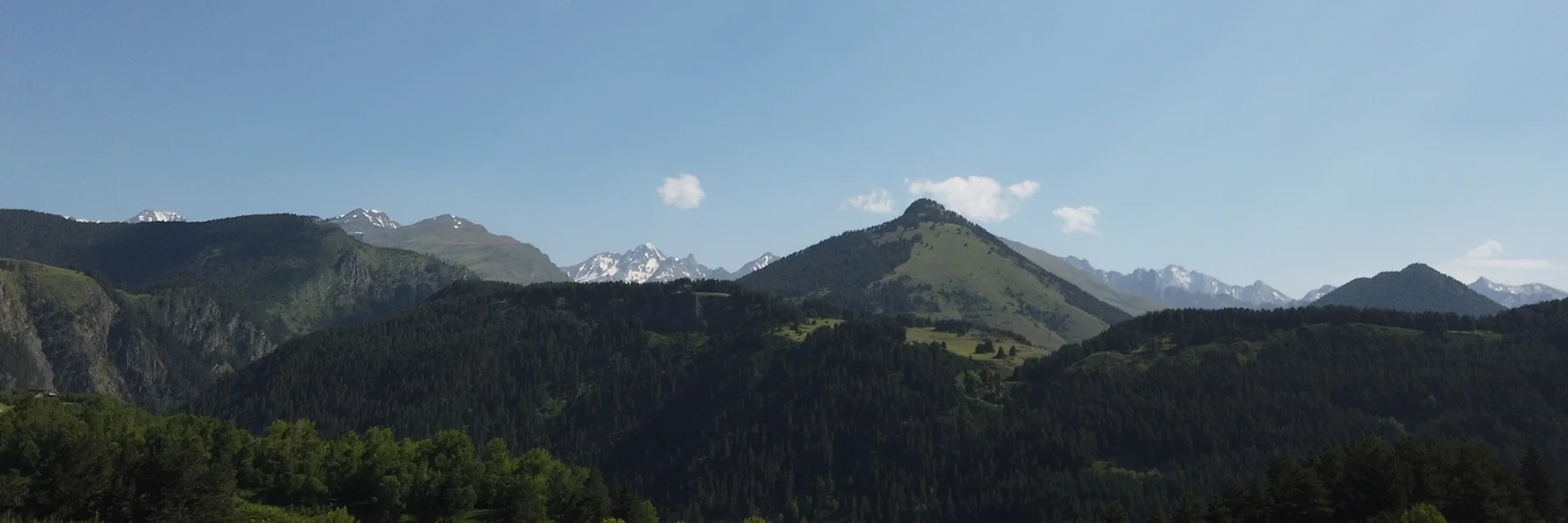Tusheti, a mountainous region in northeastern Georgia, is still one of the country's best-kept secrets. Bordered by Russia's Chechnya and Dagestan to the north, the highland Georgian regions of Pshavi and Khevsureti to the west, and the towering 3000-meter Greater Caucasus ridge to the south, this historic region has earned somewhat of a reputation as Georgia's final frontier, because it’s only accessible for a limited amount of time a year.
Tusheti consists of 48 villages scattered across three valleys, each with their own distinct traditions. The culture is a unique blend of ancient Pagan, Animist, Islamic, and Orthodox Christian influences.
Our Tusheti adventure guide aims to give you a brief overview of what to expect, but make no mistake - it’s barely a speck. As the phrase popular even among local travellers goes, "if you haven't seen Tusheti, you haven't seen Georgia."
How to Get to Tusheti
Be prepared that the journey to Tusheti is a separate adventure in itself. You get to Tusheti only by following one single unpaved road that crosses the Abano Pass. The notorious section reaches 2,850-meter height — it’s one of Europe's highest drivable mountain passes. The views from the top are some of the most impressive you’ll ever see, but the route is precarious and demands a lot of skill and attention to cross it safely.
Add to the fact that Abano Pass is only open for approximately four months each year, typically from late May to late September, and only if the colds don’t last longer or hit earlier than expected. By October, the first snows arrive, and Tusheti falls into its winter slumber with most of the local population migrating to lowlands and only a handful of residents remaining.
The best time for a visit is July through late August. During the two summer months the weather conditions are almost always favorable. June and September can be rainy, and some guesthouses aren’t even open due to lower traffic. The total distance from Tbilisi to Omalo (Tusheti's main village and the usual tourist stop) is around 190 kilometers. On average, it takes 7-8 hours of driving to get to Omalo, though travel can run longer if the driver isn’t experienced at handling hairpin turns and steep drop-offs of Abano Pass.
Here’s the general warning: don’t try to get to Tusheti yourself, especially if you have no experience navigating mountainous terrain. Always go with a trusted local driver that comes recommended. A 4x4 vehicle is a must — smaller cars will have trouble ascending.
What are the Natural Wonders of Tusheti?
The region is high. Elevation goes from a reasonable 900 all the way to 4,500 meters. The highest point, Tebulosmta, reaches 4,493 meters. But the dramatic peaks covered with snow almost year-round surround beautiful alpine meadows that, in summer months, turn bright green and covered in colorful wildflowers, most often burnt orchids, pasqueflowers, and deka (rhododendron caucasicum), which the locals make their famous tea of.
The region's remote nature has helped a lot with preserving the local ecosystem. There are multiple forests to trudge through, rivers to picnic by the side of, rocky mountain sides and waterfalls to make impressive photos of. If wildlife tracking is your thing, keep an eye out and there’s a high chance you'll spot falcons, vultures, and even some rarer mountain species.
This preserved natural state is a big part of what makes hiking in Tusheti so appealing to many visitors. Tusheti isn’t your run-of-the-mill commercialized mountain destination - when you come here, you come to experience nature and humanity coexisting in a symbiosis. And sometimes nature even triumphs over humanity.
What Interesting Cultural Sites are there in Tusheti?
Tusheti's cultural heritage is as impressive as its nature. The region is particularly known for its medieval (16th-17th centuries) stone defensive towers, castle-towers, and houses (most built using a dry stone technique) that organically blend into the surrounding environment — a beautiful example of landscape architecture, before landscape architecture was even defined as a concept.
Villages like Omalo, Dartlo, Shenako, and Diklo are currently the best-preserved and showcase Tusheti's unique architecture. In Upper Omalo you’ll get to see the reconstructed Keselo fortress. Dartlo, on the other hand, has maintained most of its traditional stone houses and is, currently, likely the most memorable and picturesque among the villages.
While hiking throughout the region, you'll encounter khati shrines — small stone structures where locals traditionally make offerings. Please be careful, when you do so. Many of these shrines follow strict sacred rules, and aren’t to be approached willy-nilly (your guide should be able to instruct how to behave if they’re worth their salt!).
What to Do in Tusheti
Tusheti primarily attracts travelers who aren’t interested in leisurely lying about and want to be physically active during their travels. Tusheti trekking would be considered world-class, if more people knew about it - there are more than 13 marked trails ranging from beginner-level day hikes to multi-day routes that should only be tackled by experienced hikers. And if you’re looking for something truly unique, opt for CaucasTour’s sheep drive experience: twice a year, in autumn and in spring, you get a chance to walk together with the sheep, as shepherds herd them to lowland pastures (autumn) or back to Tusheti highlands (spring).
Horse riding in Tusheti has a long history and can be not only a fun adventure, but an opportunity to engage in local traditions and culture. CaucasTours offers travelers several options, including a 7-day horse riding loop tour that explores all major valleys and villages, and even accompany the herd during spring horse drive.
In recent years, mountain mike tours became popular in Tusheti, with the 35km downhill ride from Abano Pass to Omalo one of the most thrilling descents in the country (it loses more than 1,300 meters of elevation along the way).
Off-road enthusiasts have also shown increased interest in Tusheti. Understandably so, the region’s rugged terrain lends itself well to 4x4 tours. The tours can be both self-driven or in company of experienced drivers, but navigating the rocky roads between remote villages is fun either way.
What to Eat and Drink in Tusheti? Tushetian Cuisine and Drinks
Tushetian cuisine is highly reflective of the region’s geography and heritage. There’s a particular emphasis on dairy products and fresh, seasonal ingredients. Must-try specialties include Guda cheese (a salty hard cheese matured in sheepskin), khavitsi (a hot and stretchy mix of ghee, cheese curds, and a bit of flour; a Tushetian fondue, so to speak), kotori (Tushetian-style khachapuri; the filling made with local cheese and ghee), and Tushetian khinkali (with a thicker dough and, traditionally, mutton in the filling).
The most popular local drink is aludi, traditional Tushetian beer. The drink is made from mountain barley and wild hops, lightly fermented, with a pleasant, earthy taste. Aludi has important ritual significance and is often an element in local festivals. Local teas, with deka and kondari (summer savory) are also worth trying.
Meals in Tusheti typically feature an abundance of vegetables and herbs, along with a meat-based main dish. As the number of eating establishments is next to none, most guesthouses offer multiple board options, from just breakfast to full-board, providing guests with three hearty meals a day.
Practical Information for Visiting Tusheti
When packing for Tusheti, keep in mind that weather in the mountains can be volatile even in summer. Essential items include waterproof gear, sturdy hiking boots, warm layers for cool evenings, quick-dry clothing, sunscreen, and hat.
You will also need a reliable power bank for your devices — electricity is not always within easy reach in Tusheti. That said Tusheti has surprisingly good mobile coverage and internet access in most villages. Among providers, Magti and Silknet cover the region. More and more guesthouses tend to offer free WiFi these days, though it would be unwise to solely depend on them during your stay.
For health and safety, bring any necessary medications as there are no pharmacies in Tusheti. The closest medical facilities are hours away in the lowlands.
Remember that there are no ATMs in Tusheti, so bring a sufficient amount of cash (in Georgian Lari currency) for your entire stay. If you’re working with a tour operator, they should be able to provide you with a rundown of the approximate amount you’ll need beyond what’s already covered in your tour package.
Responsible tourism is essential in Tusheti. The region has already faced challenges with water supply (especially in Omalo) and waste management as visitor numbers grow. It’s one of the reasons why CaucasTour only works with small groups when organizing tours. We’re committed to sustainable practices, and work closely with local communities, taking their advice into account. We believe tourism should benefit local residents and preserve the region's unique culture and environment, and that means minimizing the footprint.
By choosing CaucasTour for your Tusheti adventure, you’ll be supporting responsible adventure tours in Georgia while benefiting from the services of expert local guides, with a deep knowledge of the region. Whether you're seeking challenging treks, cultural immersion, or simply the thrill of exploring one of Europe's least accessible corners, CaucasTours will make sure you experience Georgia at its most authentic.

